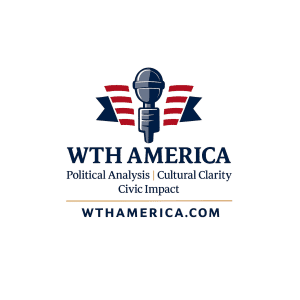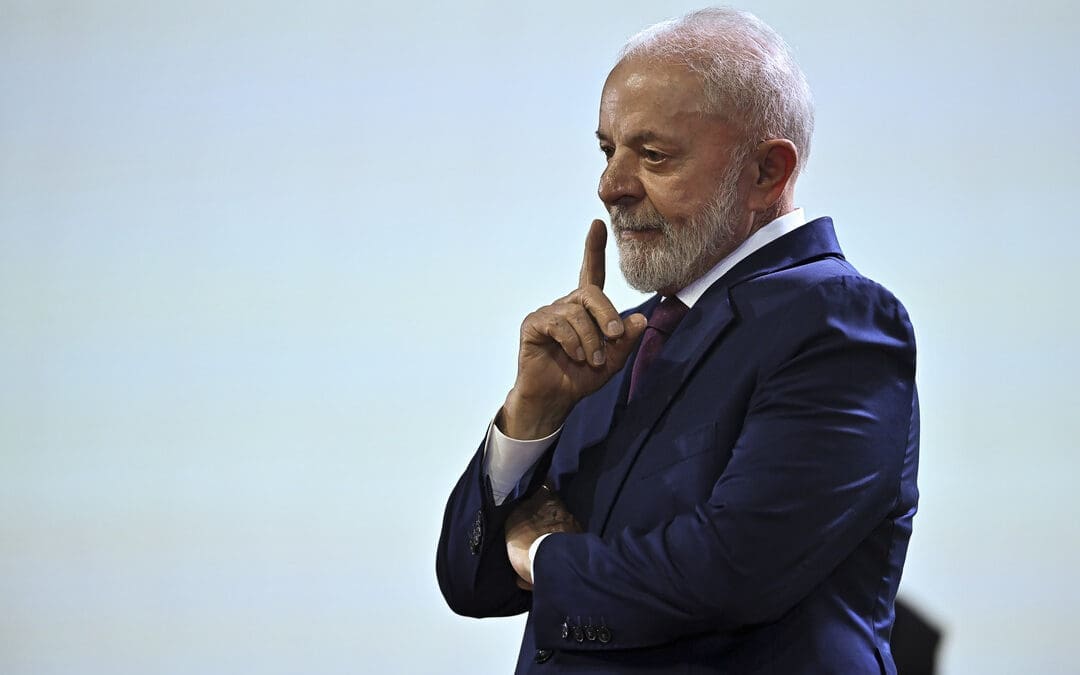
More torrential rain and flash flooding are expected in waterlogged South and Midwest
April 5, 2025
The Age of America is Over
April 5, 2025
With the third term of Brazilian president Luiz Inácio Lula da Silva well beyond its midway point, South America’s largest nation is again suffering from a leadership crisis. The once widely beloved politician’s approval rating has reached the lowest point that we have seen during his many years in office.
According to a February survey from Datafolha, one of Brazil’s most reliable survey services, 24 percent approved of the government, 41 percent disapproved, and 32 percent found it “regular.” With other polls showing similar results, the picture that is being formed is one of steady but sharp decline for the titan of the Latin American left.
Having worn out his honeymoon period with relatively few high-profile policy accomplishments upon which to hang his hat, Lula now faces the same growing dissatisfaction that has plagued every Brazilian president in the period since he first vacated the office in 2010.
Increased political polarization between the Left and the far right, a historically powerful and conservative congress, and an inability to appeal to a new generation of workers are just some of the main reasons why many Brazilians consider Lula and his Workers’ Party (PT) government to be floundering.
Worse still, Lula and (to a greater extent) the PT must now come to terms with their failure thus far to develop a successor for the Brazilian left. With the 2026 elections drawing closer and a popular desire for change on the rise, the prospects of a left-wing president being elected to a new term are looking slim.
The last three Brazilian presidents all left office with high disapproval ratings. The center-left Dilma Rousseff, neoliberal Michel Temer, and far-right Jair Bolsonaro had very little else in common otherwise, and there were many specific factors accounting for the failure of their presidencies. As a whole, however, their trajectories are representative of the instability of the 2010s, which followed a calmer political period during which Lula served his first two terms.
When Lula first left office in 2010, having governed for eight years, he left behind an incredibly popular legacy. One poll registered an 87 percent approval rating of his administration. By all measures, Lula was one of the most popular politicians on Earth (a title with which Barack Obama would refer to him in the course of a G20 meeting).
This is not to say that Lula had governed without facing opposition or critics. The PT’s left-wing approach, which focused primarily on combating poverty and developing social programs, drew the ire of the traditional elite and many in the middle class.
These elements did not feel themselves to be represented by Lula, a former factory worker from a poor region of Brazil who never attended college and talked in simple, colloquial terms. Lula was simply not the kind of figure one would traditionally associate with the Brazilian presidency, hitherto reserved for the elite scions of political dynasties, long-term political insiders, or (for a period of time) self-aggrandizing generals.
The 2005 “Mensalão” scandal came as a shock for Lula’s administration and the PT, bringing corruption to the forefront of political discourse. This was in no small part thanks to the efforts of the powerful Globo news corporation, whose neoliberal agenda and longtime opposition to Lula inspired its negative coverage of his time in power.
In spite of such opposition, Lula’s rare gift for coalition building and negotiation enabled him to construct a wide base of support in Congress. This made it possible to pass landmark legislation such as Bolsa Família and Fome Zero, lifting millions out of poverty and expanding the educational and health sectors considerably. Lula managed this while presiding over a historic economic boom and boosting Brazil’s international standing through diplomatic and economic deals.
Lula also governed during a time where Brazil’s political landscape was characterized by civility and stability, certainly in comparison to recent years. The two main political parties that competed for the presidency were the center-left PT and the center-right neoliberal Social Democratic Party. While these parties opposed each other’s policies on many fronts, both more or less agreed that Brazil should be on a path to become a more equal and economically robust republic with strong democratic institutions.
This consensus was shattered in the wake of Lula’s departure. Dilma Rousseff, herself a longtime ally of Lula and his handpicked successor, served as president during a time of mounting corruption scandals and an economic slowdown, coinciding with the rise of social media as a tool for political mobilization.
This coincided with the Jornadas de Junho, an unprecedented wave of large-scale protests demanding political and fiscal reform but mostly representing a desire for more rapid change in Brazilian society. Though Dilma attempted to respond to the protests, promising a new way of doing politics, her difficult relationship with Congress stood in the way of any real change to Brazil’s entrenched political system.
Lacking Lula’s ability to form alliances and having to appease the growing demands for reform and a crackdown on corruption, Dilma frequently clashed with Congress. After her narrow reelection in 2014, congressional leaders moved to impeach her in 2016. The Right considered this a great victory, while the Left saw it as a soft coup.
Dilma’s successor, Vice President Michel Temer, was a conservative who immediately started to enact austerity measures. The Left despised Temer as an undemocratic usurper, while the Right perceived him as another establishment politician. His public approval ratings were as low as 7 percent in some polls. Yet despite widespread calls for his resignation, Temer’s good relationship with Congress enabled him to remain afloat until the next election cycle.
By 2018, the political landscape was a far cry from the booming and stable 2000s. The Brazilian right had been chipping away at the popularity of the PT for years, while its own forces were becoming increasingly radicalized. The weaponization of the fight against corruption to target the Left, as with the now infamous Operation Car Wash, helped put Lula in jail on charges that were later overturned by Brazil’s Supreme Federal Court.
Nevertheless, the damage was done. The PT’s popularity had collapsed, and Lula was ineligible to run for office in 2018. The presidential election of that year thus resulted in a decisive victory for the previously marginal far-right candidate Jair Bolsonaro.
Bolsonaro was already unpopular as he began his presidency, a problem that he exacerbated by seeking to dismantle government institutions and presiding over a negligent response to the COVID-19 pandemic and a generally chaotic administration. Large public protests, having been a rare sight in the 2000s, were at this point a daily occurrence in the large cities.
Lula returned to the fray and narrowly defeated Bolsonaro in the 2022 election. Paradoxically Lula remained the most popular politician in Brazil while being the figurehead for a party that was now widely unpopular. But his return to office did not bring about the revival of the 2000s consensus.
While Lula did enjoy a prolonged honeymoon period, during which his promises of a return to the normalcy of the 2000s and the defense of democracy earned him a lot of good faith, the president’s inability to cure the general malaise of the last decade has seriously damaged his popularity. He has no fresh Bolsa Familia or Fome Zero to show for his efforts. In an era of constant news and distraction, a piece of legislation would need to be just as monumental as those reforms to have an impact on voter perceptions.
One of the great difficulties Lula has faced is finding a way to appeal to the new generation of working-class Brazilians, who differ from the base that he cultivated as an important union leader during the 1970s and ’80s. For years, Lula and the PT appealed to the working class with promises of reform, including social programs and increased rights for workers. This worked well as a message for factory workers and domestic servants with a developed sense of class consciousness.
However, they now have to face a changed social landscape, full of self-styled gig-economy “entrepreneurs” who consider “working class” to be a pejorative term. They find ideas promoted by the Brazilian right about self-made men and the shrinking of the state, with “more liberty and fewer taxes,” to be more attractive than the traditional discourse of the PT.
Promises of better working conditions have limited appeal to people who like to think of themselves as their own boss, bouncing from delivery to rideshare apps at short notice. An individualist “life coach” culture has spread like wildfire in Brazilian society, fueled in large part by a vast network of right-wing social media influencers, conservative news sites, and far-right politicians that creates a distorted image of the situation the country finds itself in.
With links shared on social media serving as the main source of news for much of the population, there is a widespread phenomenon of tunnel vision. Using the economy as an example, one will find that Brazil has experienced a growth rate above the expected level during Lula’s administration. However, the majority of Brazilians simply do not perceive this. The idea that the economy under Lula is in a bad shape or has even essentially collapsed due to cataclysmic corruption — something that many people associate with Lula, the PT, and the Left in general — is ubiquitous.
The consequences of this tunnel vision were felt recently when the government attempted to implement a standard regulation of Brazil’s instant payment system (Pix), an extremely popular digital payment method for small and micro-transactions that has been a part of everyday life in Brazil since its introduction in 2020. When rumors began spreading through social media that the Lula administration was going to start heavily taxing Pix transactions or even banning the system altogether, there was a major public backlash.
In reality, there were never any such plans, as the government simply wanted to flag large money transactions to prevent criminal abuse of the system. But the wave of fake news severely damaged the government’s image, as it was unable to dispel the rumors in a timely fashion. Eventually the treasury backed down on the regulation, giving the impression that the unfounded public reaction had saved Pix and adding more fuel to the disinformation machine.
In short, it is not simply the lack of major legislation or reforms that is harming Lula and the PT. It is also the failure to communicate their victories to the population and to defend themselves from a relentless opposition, one that has no commitment to the truth and has hijacked the interests of so many workers in the “gig” economy.
The PT began life as a broad coalition of left-wing currents, ranging from revolutionary Marxists to progressive Christians and social democrats, whose goal was to establish the Left as a powerful force for institutional change. The party became less diverse over the years with the role of Lula inflating at the expense of alternative figures.
When Lula left office in 2010, his successor, Dilma Rousseff, rode on Lula’s popularity as well as the reforms his government had carried out. Her reelection campaign in 2014 was a much tougher affair. By 2018, there was a general view that Lula’s return was the only way to achieve another left-wing victory. When his arrest made that impossible, another longtime Lula ally, Fernando Haddad, essentially campaigned as his proxy, only to be defeated by Bolsonaro.
In 2022, Lula returned once again as the only politician who could defeat Bolsonaro. His narrow victory brought another four years with a center-left executive. But with the 2026 election fast approaching, none of the existing PT politicians have managed to escape Lula’s shadow and develop their own popular appeal.
Other left-wing parties have played a role in national politics. The Socialism and Freedom Party (PSOL) has grown considerably over the past decade, offering a more radical alternative to the PT and routinely competing for governorships and Senate seats. It has also run its own candidates for the presidency in the four elections before the last one, when it endorsed Lula. The PSOL has criticized the PT for refusing to back any candidate that does not come from its own ranks, even when another left-wing candidate might be better placed to win.
In the 2022 election, there were suggestions that Lula might choose as his running mate Ciro Gomes, a former minister in one of Lula’s governments who became a sharp critic of the PT and eventually ran for the presidency against Lula on a centrist platform. Another possible vice-presidential candidate could have been the PSOL’s Guilherme Boulos, the party’s 2018 presidential candidate who was elected as a member of Congress for São Paulo in 2022. Either would have allowed the ticket to present the image of a more united left (or at least center left).
Instead, Lula chose Geraldo Alckmin, his former opponent in the 2006 election, who comes from the center-right Social Democratic Party. This conveyed a clear message that representatives of the old political consensus were fighting back against Bolsonarism. Yet nobody could realistically see Alckmin as a figure of the Left or as someone who might run for the presidency himself at a later stage and draw votes from the left side of the political spectrum. Lula’s choice of running mate prevented a possible rival for the PT in the left-wing space from gaining national attention and perhaps rising to the status of successor.
Flávio Dino might also have been a viable alternative to Lula as the Left’s figurehead, as an excellent communicator with a long record of political victories. First elected to Congress for the Communist Party in 2006, he ran successfully for governor in the northeastern state of Maranhão in 2014 and was reelected to that post four years later before entering the Senate in 2022.
Dino then became Lula’s justice minister, entering the national spotlight following the January 8 attack on the capital by supporters of Bolsonaro for his swift response. Yet when there was a new opening on the Supreme Court in early 2024, Lula chose to appoint Dino to fill it. This was a great honor and another victory for the Left, but it also removed him from contention as a political candidate.
The lack of alternatives to Lula is a situation that has arisen at least partially by design. By 2026, Lula will be eighty, and he has previously said that he will not run for the presidency again. The PT should have had enough time by then to cultivate a successor, yet that has not happened so far. Fernando Haddad, now serving as Lula’s finance minister, still does not have the necessary popular appeal, with his victories on the economic front having earned him little visibility.
Gleisi Hoffmann, president of the PT and a more left-wing figure, is no more popular than Haddad and is not interested in the position anyway. Rui Costa, the former governor of Bahia who occupies a more centrist position in the PT, has a stronger profile, but his popularity still pales in comparison with Lula’s. Beyond the ranks of the PT, the list of possible names grows thinner and vaguer. There is likely to be strong pressure for Lula to run again, further cementing his dominant position on the Brazilian left.
On the other hand, the right-wing opposition to Lula and the PT has its own set of problems. The Supreme Court on March 26 unanimously accepted Bolsonaro’s indictment for conspiring to commit a coup to reverse the results of the 2022 election. This means that the former president is now a defendant awaiting trial alongside seven close allies.
With Bolsonaro already barred from public office for past infractions and now potentially facing decades in prison, the Right lacks a figurehead. From the politically savvy governor of São Paulo, Tarcísio de Freitas, a sort of Brazilian Ron DeSantis, to Bolsonaro’s son Eduardo, potential candidates would effectively be proxies for the former president, in a dark-mirror version of the situation with Lula and the Left in 2018.
The polling shows that Lula needs to retake control of the political narrative. If the election were to be held tomorrow, his prospects of reelection would be slim, yet they would still be better than for any alternative figure on the left. His administration has until October 2026 to regain lost ground by bridging the gap between policy and perception and creating an atmosphere of growth, which is much harder than conjuring up feelings of chaos and negativity.
If Lula does run again, he will need to present a clear argument for doing so that goes beyond the idea of being the only option for those who oppose the far right. If he opts instead to back another candidate — most likely a successor from within his own party — then his successor will have to develop a public persona that can stand outside of Lula’s shadow, or face certain defeat.
Great Job Olavo Passos de Souza & the Team @ Jacobin Source link for sharing this story.






